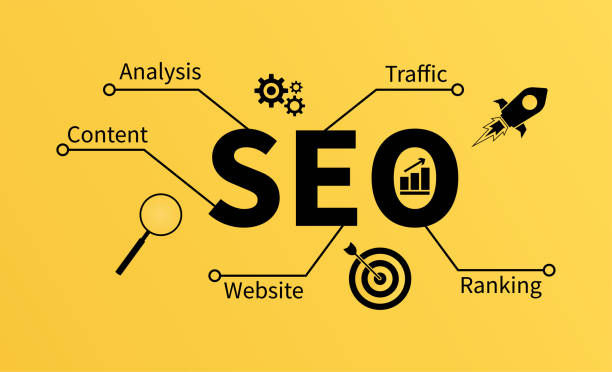Visual content is more than just decoration; it is a key component of how people interact with websites and their rankings on search engines. From infographics to high-quality images and videos, visuals on SEO play a powerful role in capturing attention, improving user experience, and driving measurable results. But why are visuals so important for SEO and engagement? This article dives into the reasons and strategies you can use to maximize their impact.
Why Visuals Matter in Modern SEO
Visuals are processed faster by the brain compared to text, making them an effective way to convey information. They encourage users to stay on your page longer, which signals search engines that your content is valuable. This can positively influence your website’s rankings. In addition, visuals on SEO make content easier to understand and share, increasing its overall reach.
How Search Engines Interpret Visuals
Search engines like Google are not just looking at text anymore. They analyze visual content using factors like:
- File names
- Alt text descriptions
- Image captions
- Metadata
By optimizing these elements, you make it easier for search engines to recognize your visuals and rank your content higher.
The Role of User Experience: Visuals on SEO
Visuals also improve user experience by breaking up text and making content more engaging. When users are happy with what they see, they are more likely to stay longer, reducing bounce rates and increasing time-on-site metrics—key factors that influence SEO rankings.
The Link Between Visuals and User Engagement: Visuals on SEO
Visuals grab attention and keep users interested, but they also have a measurable impact on engagement.
Higher Click-Through Rates (CTR)
Adding visuals to blog posts, landing pages, and search results can boost CTR. For example:
- Rich snippets with images tend to attract more clicks.
- Eye-catching thumbnails on videos can make users choose your content over others.
Boosting Social Media Shares: Visuals on SEO
Content with high-quality visuals is shared more frequently on platforms like Facebook, Instagram, and Pinterest. These shares create backlinks, increasing your site’s authority and further benefiting your SEO.
Keeping Users on the Page Longer
Studies show that articles with images or videos see an increase in dwell time compared to text-only pages. The more time users spend on your page, the more search engines consider it a trustworthy source.

Best Practices for Using Visuals in SEO
Choose the Right File Formats
The type of file you use affects page load times.
- Use JPEG for photographs.
- Use PNG for images with transparency.
- Use SVG for scalable graphics.
Fast-loading visuals ensure users stay on your site and avoid frustration caused by slow pages.
Compress Images for Better Speed: Visuals on SEO
Large image files can hurt your site’s performance. Use tools like TinyPNG or ShortPixel to reduce file size without compromising quality.
Add Alt Text and Descriptions
Alt text helps visually impaired users understand your content and provides search engines with context for your images. Ensure that alt text is descriptive and incorporates relevant keywords naturally.
Visuals That Work Best for SEO
Not all visuals are created equal. Choosing the right type can make a difference.
Infographics
Infographics simplify complex data and make it visually appealing. They often get shared, creating backlinks that are invaluable for SEO.
Videos
Adding videos to your site boosts engagement. Platforms like YouTube are powerful search engines themselves and can drive traffic directly to your website.
Custom Graphics and Illustrations: Visuals on SEO
Unique visuals tailored to your brand stand out more than stock photos. They also make your content feel authentic and professional.

The Importance of Mobile-Friendly Visuals: Visuals on SEO
In an era where mobile browsing dominates, ensuring that your visuals are mobile-friendly is critical.
Responsive Design
Responsive websites adapt to different screen sizes, ensuring that visuals look great on any device.
Avoid Large Images on Mobile
Overloading mobile pages with large images can slow down load times. Instead, use adaptive images that scale properly.
Visual SEO Mistakes to Avoid
Skipping Alt Text
Neglecting alt text makes your images invisible to search engines and inaccessible to visually impaired users.
Ignoring Page Load Speed: Visuals on SEO
Slow-loading pages lead to higher bounce rates, hurting your SEO efforts. Always optimize images for speed.
Using Unoriginal or Poor-Quality Images
Low-quality or overused stock images can make your content feel generic and reduce user trust.
How Visual Content Helps Build Backlinks: Visuals on SEO
Backlinks remain a cornerstone of SEO, and visuals make it easier to earn them.
- Infographics often get shared with links back to the original source.
- Videos embedded on other sites typically include a credit link.
- High-quality images can attract attention from bloggers and journalists.
By creating visuals that others want to reference, you naturally improve your site’s domain authority.

Visual Content and Accessibility: Visuals on SEO
Incorporating visuals should always consider accessibility. Using descriptive alt text, captions, and transcripts for videos ensures that everyone can interact with your content. It also demonstrates that your site meets accessibility standards, which some search engines reward.
The Future of Visuals in SEO
As technology evolves, visuals will play an even bigger role in SEO.
- Visual search engines like Google Lens are becoming more popular.
- AI-powered tools can better analyze image content.
- Interactive visuals, such as 3D images and augmented reality, are likely to become mainstream.
Staying ahead of these trends ensures your website remains relevant.
Conclusion: Visuals on SEO
Incorporating visuals into your SEO strategy is no longer optional. They enhance user engagement, improve rankings, and create a memorable experience for your audience. By following best practices, optimizing for speed and accessibility, and using visuals strategically, you can maximize their impact on your SEO efforts. Remember, search engines and users alike value high-quality, relevant visuals that tell a story and make your content stand out.







